
All images courtesy of Rudy Sarzo
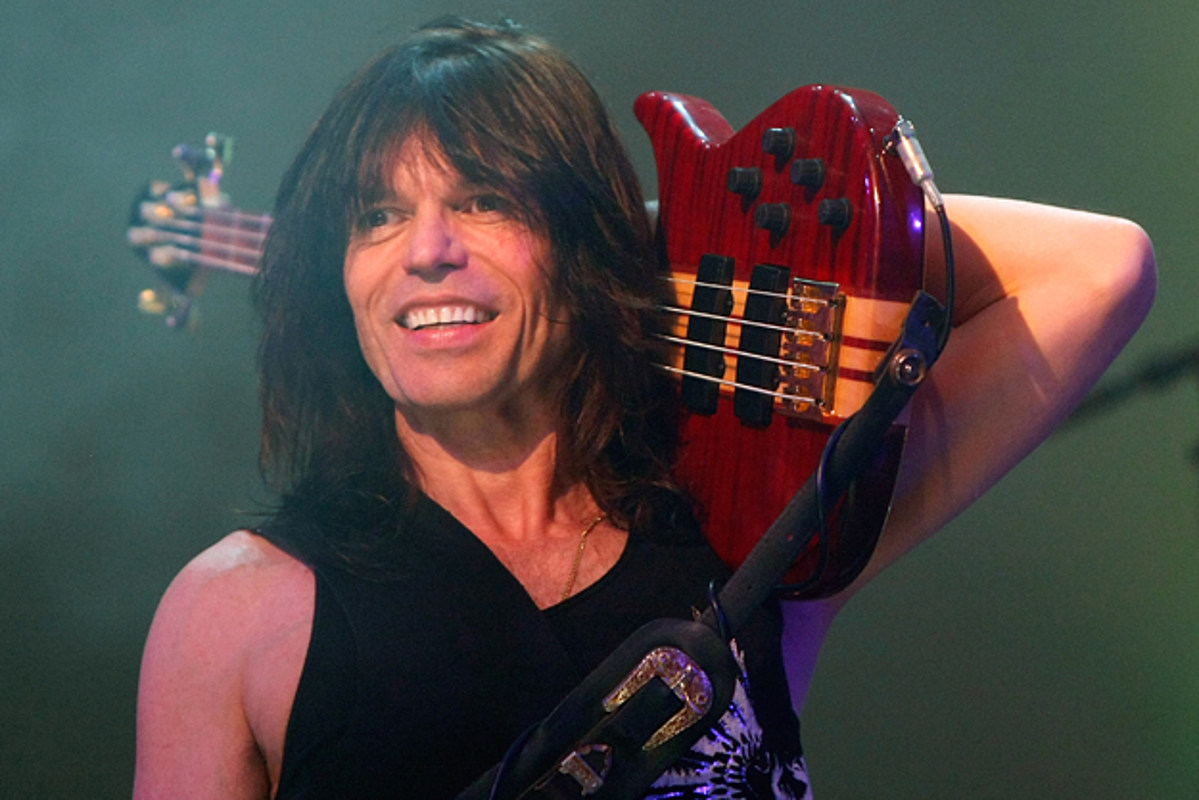
A revered and crucial figure in the annals of Rock history, Rudy Sarzo boasts a wide-ranging resume that extends from Ozzy Osbourne to The Guess Who.
Sarzo’s musical journey began with Ozzy four decades ago, but it was his contributions on Metal Health, Quiet Riot’s groundbreaking Heavy Metal album, that cemented his legacy in Rock ‘N’ Roll history.
Metal Health, the band’s third studio album, proved to be a worldwide success. Released on Mar. 11, 1983, Metal Health became the first Heavy Metal album to soar to the No. 1 spot on the Billboard 200. The album was fueled by two Billboard hits in “Cum On Feel the Noize” (No. 5) and “Metal Health” (No. 31), songs that remain iconic Rock anthems to this day.
After kicking the door down with Quiet Riot, Sarzo went on to play in Whitesnake, Yngwie Malmsteen’s Rising Force, Dio, Blue Oyster Cult, Devil City Angels, and countless other musical acts over the years, demonstrating his innate versatility.
In 2017, Sarzo was inducted into the Hall of Heavy Metal History for his sustained impact on the genre.
In addition to his musical endeavors, Sarzo also moonlights as an instructor at Rock and Roll Fantasy Camp and hosts a wildly successful podcast, Six Degrees of Sarzo. For a more detailed peer into his stint with Ozzy, Sarzo chronicles his abbreviated ride on the Crazy Train in his book, Off the Rails.
Like most musicians, Sarzo anxiously awaits the return to playing live music. His current band, The Guess Who, have touring dates on the docket that date back to last year.
I recently sat down with Rudy to discuss his stint with Ozzy, bond with Randy Rhodes, the reemergence of Rock music in the early 1980s, the impact of Metal Health and sudden rise of Quiet Riot, and more.
Andrew:
What do you recall from your early exposure to Rock music?
Rudy:
Well, I was born in Cuba. So, while I was there, up until about 11 years of age, there were very few American Rock ‘N’ Roll artists. I was born in 1950, so by the time I was five or six years old, we started getting Rock ‘N’ Roll on the airwaves. Whatever station played American music, it was typically Nat King Cole mingled with Little Richard or Elvis. But, the bulk of it was Cuban/Latin music. So, there were a lot of big bands and big orchestras; that was very popular.
It was more cost-effective for a promoter to hire a small band than, say the Duke Ellington orchestra. That’s one of the things that popularized Rock ‘N’ Roll — having live music for less.
Andrew:
Your history with Kevin DuBrow dated back to the late 70s when you met at the Starwood if I’m not mistaken?
Rudy:
Yeah, before I joined the band. I made three trips to L.A., and on the third one, I stayed permanently. The first trip was a kind of reconnaissance – trying to find players to put a band together. We really could not afford it, so it was decided to go back to the Midwest, the Nebraska area. There’s a town called Papillion, and there’s an Air Force base there. One of the members was from that area, so I spent time there. We got musicians together from that area, then I went back to LA in ’78.
I saw Quiet Riot performing live. After watching their show, I bumped into Kevin DuBrow, who just walking around. I felt compelled just to tell him that they were playing on the right track [laughs]. There was nothing else to it. I wasn’t even thinking about, “Wow, what if I join these guys?” I was just being complimentary like I do to hundreds of other bands that I’ve seen in the last 40 years playing in clubs.
Andrew:
The Ozzy lineup was in a bit of a transitional phase after Diary of a Madman. How did you come into the picture?
Rudy:
After Diary of a Madman was recorded, the powers that be decided to replace the original rhythm section of Lee Kerslake on drums and Bob Daisley on bass. Tommy Aldridge got hired on the spot; he didn’t have to audition. There was a really long history between Tommy and Ozzy, dating back to Black Sabbath and Black Oak Arkansas touring together. So, they started looking for a bass player in Los Angeles, and Randy [Rhodes] suggested me because we were friends and played together. He trusted that I would be the right guy because they were also looking for musicians who had certain qualities like not being a bad influence on Ozzy. Somebody who could be a cool hand on the bus – who could play the songs, of course – and had a certain image. Randy kept saying, “Yeah, Rudy’s the guy.” It’s actually a little more complicated than that, but, I got the second call from Ozzy, went to audition the next day, and got the gig.
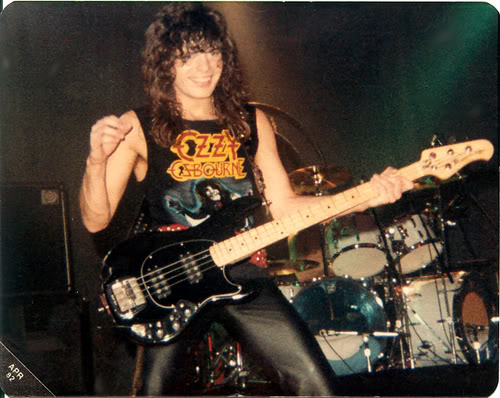
Andrew:
You detail this in your book, Off the Rails, but you had a close-knit bond with Randy Rhodes. Tell us about that.
Rudy:
It was very simple, we were bandmates. Playing in L.A. with Quiet Riot, we really did not have that much time to hang out. [Randy] was very busy teaching – he would teach at least nine hours a day at his mom’s school in Musonia [School of Music]. Then, he would come over for rehearsal, and there was not a whole lot of hanging out at rehearsal. It was basically, do the Quiet Riot setlist forwards and then we’ll go backward. And if there was time left, we would work on new songs that we’d either play live, or we went into a recording studio and made demos to send to record companies. If I’m not wrong, we did that every night! There were no nights off, except if on the weekends there was a certain party to attend or if we were gigging. But it was at least five nights a week.
Eventually, I joined the staff at Musonia and taught there. And then I got to spend more time with Randy, because there I was, in this room right next to him. Between classes, we used to hang out a little bit and he taught me how to teach because he had been teaching for many years before I met him.
Andrew:
What prompted you to leave Ozzy and join DuBrow?
Rudy:
Well, we were bandmates in Quiet Riot. Then after Randy left LA to join Ozzy, Kevin kept the band that he called DuBrow. There were a lot of players in and out, and at some point, right before I join Ozzy, I joined DuBrow because I was trying to do something else with other bands. Then, that did not pan out and I moved in with Kevin. He said, “Well, one way you can pay the rent is by playing with me in DuBrow.” I said, “That sounds perfect.”
I got to spend a lot of time with Kevin – I lived with him – and I went through all the trials and tribulations of being in a local L.A. band twice with Quiet Riot and DuBrow. Even when I went out on tour with Ozzy, every time that we were on a tour break, Randy and I would come back to Los Angeles and the first thing we did was go and pick up Kevin and head to the Rainbow [Bar and Grill]. During that period, we were really tight.
Then what happened was, Randy passed away on March 19th of 1982. In a nutshell, I lost my joy of playing. So, I was looking for my next move, because I needed to find joy and didn’t know what it was going to be. I got a call from Kevin to come in and do one song on an album to be released in the future if they got picked up by a label. There was no record deal on the table at that time. I went in to record “Thunderbird,” which is one of the songs that I play in DuBrow with Kevin. Since I knew the song, we cut it really quickly. So, the producer and Kevin say, “Do you remember ‘Slick Black Cadillac’?” which is the only song from the Randy Rhodes era that wound up on the Metal Health record. I say, “Sure,” then we cut it and we did about three or four more songs. So, by the time I leave the session, I had done like four or five songs.
Shortly after that, within days, I flew to New York to record Ozzy’s Speak of the Devil live record. That session with the guys – with Kevin, Frankie, and Carlos – kept lingering in my mind about how much of a good time I had. Then, I’m back with the Ozzy camp, and still, everybody was shell-shocked; it was never the same once Randy died. We were still gun-shy about everything.
After I recorded Speak of the Devil, I called up Sharon and told her that I was going to leave the band and play with – it wasn’t officially named Quiet Riot yet. It wasn’t renamed Quiet Riot until we signed the record deal with Columbia Records. The last [show] with Randy was, I believe Kevin’s birthday gig at the Starwood. Actually, we did a reunion in 1980 at the Starwood; just a weekend. Randy came back from a break with Ozzy, and Kevin talked him into doing a reunion. So, at that moment, [Randy] was officially a member of Ozzy and had been recording Blizzard of Ozz and getting ready to record Diary.
The debut of the Metal Health lineup was the weekend of March 18-19 of ’83; we played at the Roxy in L.A. We did four shows – it was actually a King Biscuit, live radio broadcast. Great idea – the first time you ever play gets recorded and put on the radio forever and ever! [laughs] That was our very first show – at least reuniting Kevin and myself as Quiet Riot with Frankie — who had been playing with him since 1972 on and off anyway. Carlos was the only new component to the group.
Andrew:
As far as the origin of the song “Metal Health,” what is your recollection?
Rudy:
What’s interesting about the song “Metal Health” — it was recorded even before I was asked to record “Thunderbird.” I wasn’t there. The song originally was called “No More Booze,” and was a Snow song that Carlos brought into that band that wasn’t officially called Quiet Riot yet. Kevin rewrote the lyrics and called it “Metal Health.” Randy and I, like I mentioned, used to go and pic kup Kevin when we came into town. One of the times that we were hanging out, Randy and I were telling Kevin about these metalheads – because Metal had not returned to the U.S., or at least L.A. at the time. So, headbangers were pretty native to the UK, because that’s where you got the true Metal. You had certain artists and bands from Europe, but the new wave of Metal that came out of the late 70s and 80s, like Motörhead, Def Leppard, Iron Maiden, Judas Priest – that was pretty much the UK. So, we were telling Kevin about this thing going on in the UK where kids would bang their heads on the stage while the band was playing, so he got that imagery and wrote “Metal Health.”
May I add that it was Chuck Wright who played on that song (and “Don’t Wanna Let You Go”) and is credited in the first prints of the album.
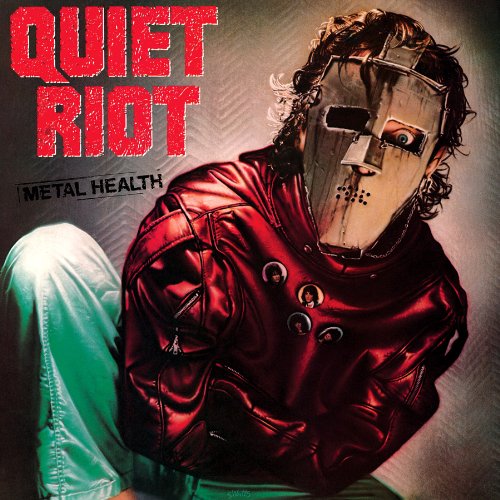
Andrew:
Many consider Quiet Riot to be among the most influential bands of its time. The immense success of Metal Health kicked down the door for bands of similar mold in Los Angeles. What are your thoughts on that?
Rudy:
That’s interesting; this is my perception because this is what I experienced. The rise of Quiet Riot was surprising, because not only did we rise in the level of record sales, but also reached the notoriety of the bands that our heroes did. I’m not saying our record is as good as theirs; I’m talking about the level of success of our heroes. That’s not what we set out to do. We set out to play these songs and hopefully, we could sell 50,000 copies, which meant that we could get a chance to make another record and make a living out of touring. That’s how musicians, with very few exceptions, made a living. Our role models were bands like Humble Pie, who were road dogs; just on the road all the time touring, playing, and honing their craft. That’s what we wanted to do, not to have the first debut metal record to reach No. 1 on Billboards. It’s something that was not on our radars. Especially at a time when metal was considered dinosaur music in Los Angeles and within the industry.
Since I had already experienced a rise in Ozzy’s career by touring with him mostly in the US and Canada, the rise of Quiet Riot wasn’t that much different. If you go up a mountain and you come down and you go up again, things are familiar; it’s the same top. I experienced that with Ozzy because I did the Blizzard of Ozz tour and Diary of a Madman tour and I saw the progression of playing theaters to quickly becoming an arena band. On the Diary tour, we started playing arenas and they were sold out every night in a matter of six months. It was a very quick ride to the top. The same thing happened with Quiet Riot. We went very quickly from being an opening band for major bands like ZZ Top, Scorpions, Iron Maiden, and Black Sabbath, to becoming headliners on our own with the immense help of MTV. When that happened with Quiet Riot, I was like, “Oh, okay, this looks familiar. If we keep moving forward in this direction, we’re going to get to a certain height.”
Now, going to No. 1, that was something that I had never experienced before. That was new territory.
In order to reach that, there’s certain scheduling that you have to have. This is when you had radio stations and record stores. You’d finish the gig the night before and you’re opening, so you leave there at the latest 9-10 o’clock. You go to the next town, park in the parking lot of the radio station, and wait for your turn to go in, talk to the DJ on-air to promote the show that night and the record in-store [signing]. You check into the hotel, take a shower, have lunch, go to the record store and sign autographs, get out of there in time in for the soundcheck, do the gig, repeat. You’re so busy doing that, you don’t even notice – I mean, you’re keeping an eye on the charts because you see they’re going up – so you see the efforts paying off. But you do not obsess with that; you obsess with keeping it going.
I remember when we were in London and I’m having breakfast, and our manager comes in and says, “Cum on Feel the Noize” just reached gold status as a single, which means you have to sell a million singles. When he said that, it didn’t even hit me because I was thinking next. Thinking next was what got us to where we were at.
Andrew:
Describe the music scene in the early 1980s and what ultimately led to the reemergence of Rock music to the forefront.
Rudy:
This is what happened – the bands that had the advantage were the bands who were resilient enough that they were around in the 70s. I can name you bands like Mickey Ratt, Dokken, London – which became Mötley Crüe, Great White. I remember Great White playing at the Troubadour before I joined Ozzy. Jake E. Lee was playing with Mickey Ratt, so, there was all this going on during a time when record companies were not paying attention to these bands because they were only paying attention to New Wave and Punk; that’s what got signed. Van Halen was the last Rock band to get signed out of LA. They just shut the door – Devo came in, The Knack came in, The Motels, you name it. All New Wave and Punk. So, all of us were being told, “You guys are dinosaurs. This ain’t coming back.”
Meanwhile, there was a new wave of British Metal happening in England. Of course, days before the Internet, it didn’t matter. It was so far away. So, the scene was pretty much dead on the Strip. What happened was, there were clubs in the Valley, like F.M. Station and Filthy McNasty. Filthy and his brother Wolfy moved and got a place in the Valley, called the F.M. Station. That started playing Rock ‘N’ Roll, and so did the [Reseda] Country Club. Those became the Rock venues; if you wanted to see Rock, you went there. Then, even prior to Metal Health coming out, there were a couple of bands – I know for sure that Mötley Crüe had an EP and so did Ratt. Bands were going independently trying to stay alive, waiting for something that was not even foreseeable in the future. It was kind of by fate; it was the same reason that I kept going. It was that fate that there’s no turning back; you have to make this happen somehow. So, when Metal Health opened the doors to what happened in LA, these bands were ready. Mötley Crüe was ready to go. So was Ratt, so was Dokken, so was Great White because they had been there since the 70s. So was Blackie [Lawless]; Blackie had been around for a long time before W.A.S.P. was a thing. You would see “Metal Health” and “Cum on Feel the Noize” on MTV and within months, you had a bunch of other bands. They were ready to go; they had been waiting all this time.
Andrew:
I’m not sure how often you get asked about M.A.R.S., a project you embarked on with Tommy Aldridge in the mid-80s, but I always wanted to hear the backstory.
Rudy:
We wanted to get the best musicians available. Tommy and I had been trying to get a project off the ground. Our first version of the project was with Craig Goldy and a singer named Jeff Fenholt, who was playing Jesus Christ in Jesus Christ Superstar on Broadway. Incredible singer, but not really well known in the Rock scene because he was on Broadway. Jeff went on to become a minister and did a lot of Christian broadcasts and performances. When Goldy joined Dio, the band just fell apart, and Tommy and I kept going.
There is a producer named Mike Varney, who was very responsible for the high quality of musicianship that was given focus in the late 80s through his label, called Shrapnel Records. He had all those subsidiaries, like Magna Carta and so on. He was the resource; if you want to find a shredder – which was mandatory in the late 80s – there was a certain style that Tommy and I had from playing with Randy; Randy originated all of that. There was a certain quality, and Mike Varney knew that. He said, “Well, I’m gonna send you the best I got,” which was Tony MacAlpine. What an outstanding, magnificent musician he is as a composer; he could play anything. He’s the only person I’ve ever met who I would play “Stump the Trunk” with, before That Metal Show even existed. This would be at my house because he was staying with me. I would say, “OK, Tony, play this song, blah blah blah.” And he would go, “OK, what key do you want?” and start playing it! I would consider him to be at a Stevie Wonder level on genius, but in a different way, because Tony was a classically trained pianist. He would go to piano competitions, and we talked about this in one of the shows that I did for Six Degrees of Sarzo. He’s one of those guys that gets in the zone when he plays.
And Rob Rock was the best singer that we auditioned during that whole period. Again, I think that was Mike Varney. He had all the resources and was the man connecting everybody. The strategy behind making that record was that half the record would be heavy, and the other half of the record considered commercial to appeal to a major label, but nobody was interested in that type of music at that time. That fell apart, Tommy and I kept at it for a few more months, and eventually, we joined Whitesnake.
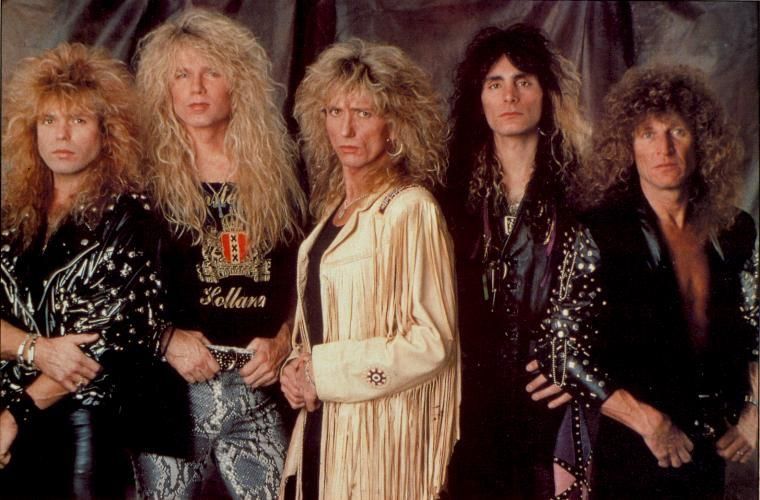
Andrew:
Were you and Tommy previously connected to Whitesnake?
Rudy:
We were offered that gig in 1985. Tommy leaves Ozzy and I leave Quiet Riot and we say, “OK, let’s put a band together.” For a very short time, Sharon was our manager. Right before that happened, Whitesnake was the opening band for Quiet Riot, in 1984. So, we knew each other; I hung out more during that tour with the guys from Whitesnake than I did with Quiet Riot because I was leaving the band and they knew it. I gave my notice before we started the 1984 Condition Critical, so the guys in Quiet Riot knew I was leaving and didn’t really care about hanging with me, I didn’t care about hanging with them. I was having a good time hanging out with the Whitesnake guys. Of course, I was having a good time because I wasn’t in the band, and I began to detect there was some sort of animosity going on individually with certain things.
So, I leave Quiet Riot, and Tommy and I started working. We got a call from Whitesnake management, we went to a meeting, and they made an offer to join the band. I ask, “Who is still in the band?” And they go, “John Sykes,” and I was very aware of the friction going on between David [Coverdale] and John back then. I’m going, “I just left a situation. I don’t want to join another one, because what’s the point?” So, I declined. Tommy thought about it, and within a couple of weeks, he declined also.
Fast-forward to 1987. After we did the Project Driver album, the record companies did not bite, and we get a call from [John] Kalodner saying, “Listen, David is doing this video for the record that’s coming out. Would you guys like to come down and be in the video?” That’s how it started.
So, on the day of the shoot, I meet Adrian [Vandenberg], who I’d already met in 1983. When we did the first Metal Health show outside of LA, we were in the San Francisco area with Vandenberg, the band, headlining. So, we met and hung out a little bit. And Vivian [Campbell] I knew from being in Dio and being in the local LA scene, so, there was already a camaraderie. And I knew David, of course, from touring. It felt organic; great band, great musicians, great singer, the whole thing. We’re making a video; we’re out to promote a record. That came together very quickly and was almost effortless.
Andrew:
It sounds like there was good chemistry amongst all involved. What ultimately prompted the Whitesnake hiatus?
Rudy:
What happened was, in 1990, when we were on tour [Slip of the Tongue], David announced that at the end of the tour he was going to take a break and did not know what the future of Whitesnake was. So, everybody had time to think about what to do with their life musically. Steve [Vai], before he joined Whitesnake, was already working on his solo career. We used to promote his record Passion and Warfare live with Whitesnake. During his guitar solos, the band played excerpts of about four different cuts from that record. So, that was a natural for Steve. But for myself, Tommy, and Adrian – actually, I got together with them for breakfast the day after David announced that – and said, “Listen, guys, we have a nucleus here. We know that Steve is working on his solo career, why don’t we just continue as a unit?” Eventually, a couple of years later, we did the Manic Eden record – which is exactly that! It took us a couple of years later to think that it was a good idea [laughs].
Andrew:
On the heels of the Slip of the Tongue tour, you assembled a band called Sun King. What was the blueprint for that band?
Rudy:
Every time I would come back to LA on a break, I would hit the local scene to check out musicians. The first one that I checked out was a guitar player named John Lowery. Nineteen years old, I saw him play, and I thought, “This is gonna be the next guy.” His name now is John 5. So, we were in a band for about two or three years. The blueprint of that band was more 80s arena band. Somehow, some way, we did not do what Pantera did. Pantera went from a Hair band to the New Wave of Metal. We were there, we got signed, we had producers working with us – then Grunge happened.
In retrospect, it would have been really easy to go Grunge, because if you take a look at the mainstay of the Grunge bands like, say, Soundgarden, it’s very early Black Sabbath, arrangement-wise. I already played with Ozzy, I knew how to do that, but going back was not really an option for me. Going backwards was too fresh; I kept moving forward. What’s forward? What’s next? Well, what was next was actually going back to doing what I was doing before. But, I never embraced that. So, that band broke up and John 5 kept working with producer Bob Marlette, who is not only a dear friend of mine but somebody that I was in a band in the 70s. We came to LA together; we drove here in his family’s station wagon. Richard Danielson eventually joined a band called Vintage Trouble; he’s the drummer for that band. Of course, I knew they were talented back then, that’s why we got a band together. I’m glad I at least got to play with those guys and those guys then went on to do very well for themselves.
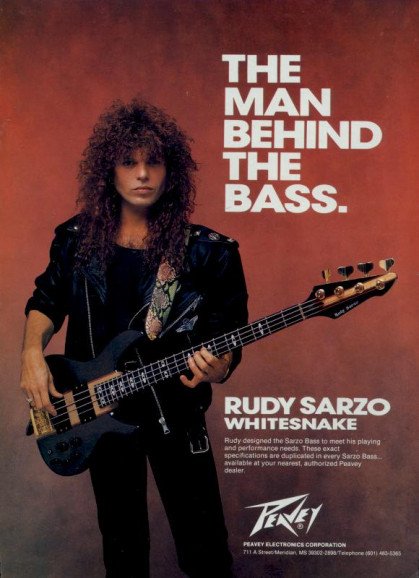
Andrew:
You mentioned the Grunge effect of the 90s. Could you talk more about the musical shift once the decade turned?
Rudy:
Our main source of marketing was MTV. If you were not on MTV, you did not exist. In fact, you would not get airplay on the radio if you were not on MTV. But then again, there were a lot of bands that sustained their careers; it didn’t destroy everybody. Basically, the US market went in a whole different shift; it went more urban, with Gangster Rap and Grunge. But there were so many other markets that did not even embrace Grunge. Japan was not a big Grunge market; it’s always been a big Metal market. You have Scandinavia, always a big Metal market there. Most of Europe – Europe is not really a big Metal market, but it did not change because you have all these festivals. That’s were you get to play in Europe. South America has become another huge market for traditional Metal; they have their own scene of South American Metal bands.
Andrew:
Your diversity as a musician is truly remarkable. Your range extends from Ozzy Osbourne to The Guess Who. How are you able to adapt so seamlessly?
Rudy:
When I first started playing clubs, it was not tribute bands; it was actually Top-40. AM Top-40 radio was completely diverse. You could hear Led Zeppelin “Whole Lotta Love,” and then Johnny Cash comes on with “Ring of Fire.” That’s the way it was. There’s nothing wrong with that; music is music. Pop just means popular. There were only so many Rock radio stations back in the day; we had one or two AM stations. You got the teenagers listening, the adults, and then the older demographic. Everybody was listening to AM because it was basically the only music that you were gonna get. The same audience that listens to Johnny Cash is listening to Led Zeppelin. So, that’s what I played; I played everything. A lot of Motown – Motown was huge. I was actually probably more Motown and more West Coast — when I say Motown, in my mind, I’m referring to the craftsmanship of the musicians playing those records. You had the Wrecking Crew in LA, the best-of-the-best. For me, listening to Top-40 radio and playing those songs were music lessons. I was learning. Nothing had changed for me; I’m still playing music and I’m playing diverse styles of music.
Andrew:
What are some albums that mean the most to you?
Rudy:
There’s too many, so I’ll just tell you bands. Any band that is part of the soundtrack of my life is a legacy band, because it’s music that took me on a journey of years. It wasn’t just one record that they had. I would say the Who, the Beatles, Led Zeppelin, [Jimi] Hendrix, Yes, Miles Davis. I could pick any record from those artists and get lost in it.
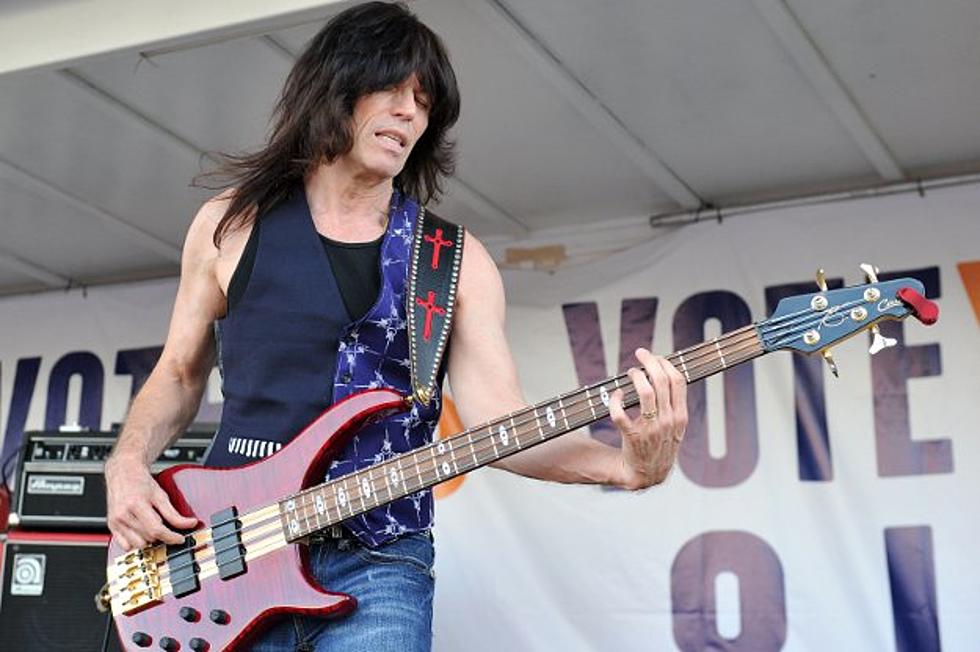
Andrew:
Name a few artists that you’ve always wanted to collaborate with, but for whatever reason, never had the chance to.
Rudy:
Collaboration is something that I would have to feel very comfortable with; not really have a fanboy experience, because I’ve been a fan longer than a professional musician. There’s just some people that I know that have been in my life for so long, that to finally play with them – it’s different to collaborate because when you collaborate with somebody you sit down, write songs, and get into each other’s head. If I’m too big of a fan of somebody, I don’t think that I would really want to do that. To play with – that’s a different story – anybody from Page to Jeff Beck.
I started doing Rock and Roll Fantasy Camp about 14-15 years ago, and through the years, I’ve played with some of my own favorites. Recently, it was John Anderson from Yes. He came in and sang with our band and sounded just like the record; we didn’t change the key, nothing. He had this joyful personality and started singing “Owner of a Lonely Heart.” It’s pretty tough to do the Rock and Roll Fantasy Camp, because there’s about 15 bands at least, and you have to sing with all of them. So, it’s like doing an actual concert and you’re there all day long. Not only are you singing, but you’re talking, and you do a Q&A. So, for anybody who has difficulties going on tour or doing a long show, it will be evident during this camp. John was just magnificent. He was perfect all the way through and he must have been there for at least eight hours.
Andrew:
Let’s talk about your podcast, Six degrees of Sarzo. It’s an insightful listen that offers a unique perspective.
Rudy:
I started out as a podcast called The Dash. It’s still up there. It was more across the board. Like, I have neighbors who are part of the crew, and my crew, I mean like prop master; creates the props. Across the street from me lives a concept designer who comes up with all the concepts for the Marvel universe. Like, let’s say, every movie has a new Iron Man space suit. My neighbor is the one who draws all the concept designs for that. And then the other neighbor down the street, he’s since-moved to Atlanta because that’s where Marvel is based out of, is the prop master. So, in his garage, he had all these different Thor hammers. Those are some of my initial podcasts. Then another neighbor down the street, he goes on radio stations doing promotions for artists and bands. And some musicians and friends of mine. What I was interested in doing, was documenting their truths about what they do, which is what I still do with the show.
I was attending services for Ronnie James Dio and Lemmy, and everybody is saying all these nice things about them, and I’m thinking, “It would be nice if the person was here to listen to all these nice words from their friends and colleagues.” So, I figured, why not do a living testimonial, so you have the artists talking about their music? All the facts, so there’s no misinformation and people don’t have to go by Wikipedia. This is the truth in their own words. Not written, but you can hear it. So, that’s why I started doing the podcast. I got a few months into it and got approached by the CEO of Monsters of Rock. This is going to be my third year. When we first started doing it, it was just like a broadcast, which it still is on Monsters of Rock radio. We are on Friday, Saturday, Sunday, and either Tuesday or Wednesday. It varies according to the calendar, the holidays, and all that. So, we would have the initial broadcast, and then a few months later, we’d rebroadcast it due to people telling us that they missed it. We get about two or three broadcasts out of each episode. Per broadcast, we get over half a million listeners. Then, we’ve just been passing that on to Spotify. Once it’s on Spotify, it’s not going to be rebroadcast on Monsters of Rock. So, we’re building a catalog. Eventually, everything will be moved over to Spotify with time. A couple of years from now, there’s gonna be about a hundred shows available on Spotify.
Andrew:
What’s on the horizon for you?
Rudy:
The Guess Who has had touring dates since last year that keep getting pushed forward, so I’m looking forward to playing those shows.
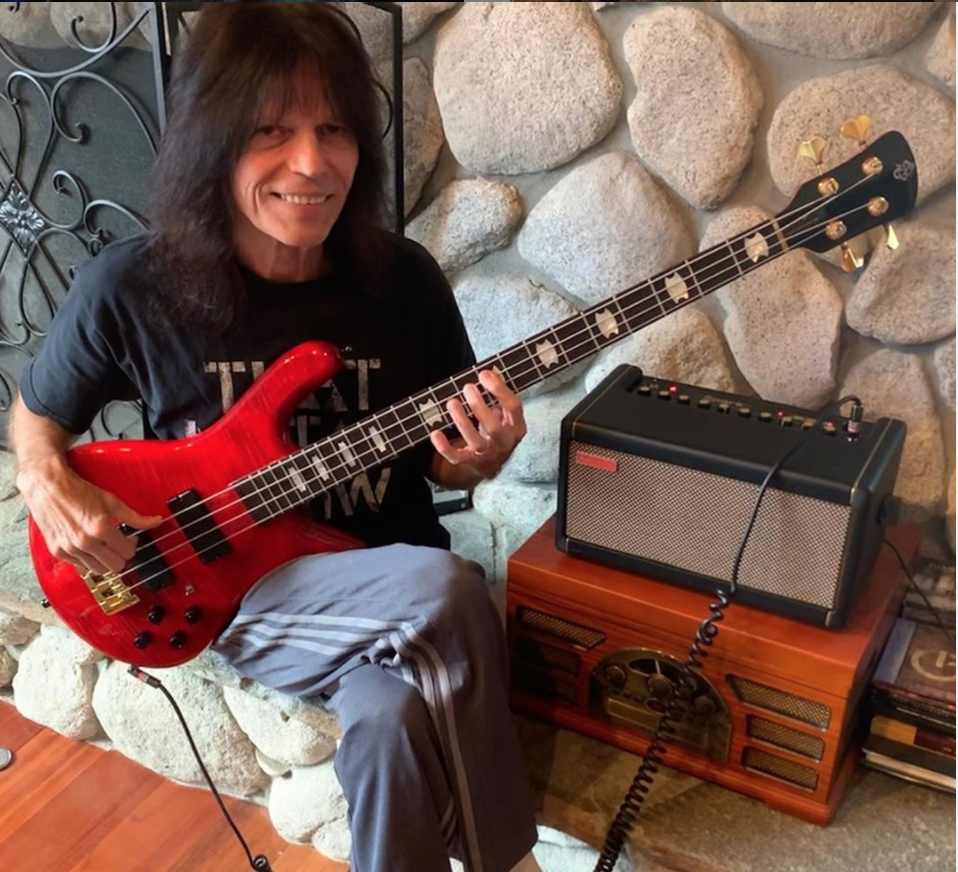
Interested in learning more about the artistry of Rudy Sarzo? Check out the link below:
Dig this article? Check out the full archives of Shredful Compositions, by Andrew DiCecco, here: https://vwmusicrocks.com/shredful-compositions-archives/

Rudy seems like a passionate and fun guy to have a beer with and talk music. I love listening to his stories and fresh perspective on things. I distinctly remember when MTV launched and when new wave and punk came in and changed things, just like grunge. As an average music lover, I didn’t realize the impact it had on heavy metal. Thanks for a great interview. I learned a lot.
Thank you so much for reading! Rudy is awesome and incredibly insightful. We could have easily chatted for hours about his 40-year journey!